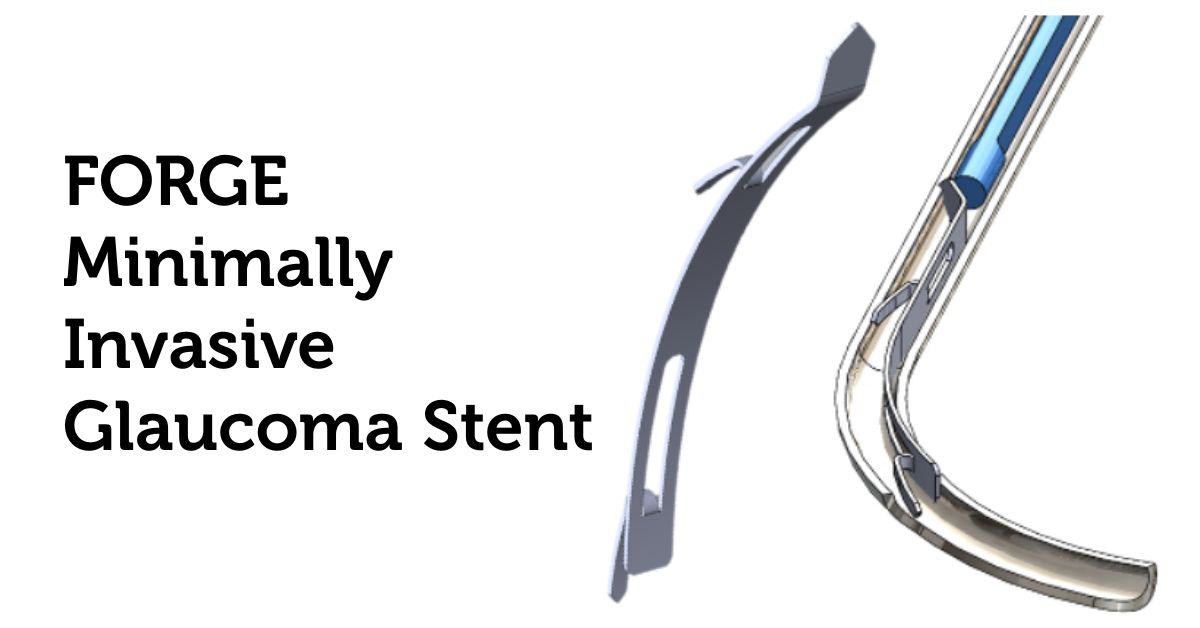FORGE Minimally Invasive Glaucoma Stent

Implantable Minimally Invasive Ocular Bypass System for Enhancing Aqueous Humor Outflow in Glaucoma
Background
Glaucoma is a leading cause of irreversible blindness, characterized by elevated intraocular pressure due to impaired aqueous humor drainage through the trabecular meshwork and Schlemm’s canal. Traditional treatments such as trabeculectomy and tube shunts can effectively lower pressure but carry significant risks including hypotony, infection, and scarring. In response, minimally invasive glaucoma surgery (MIGS) techniques have emerged to offer safer, less traumatic alternatives that aim to restore or bypass natural outflow pathways. These emerging approaches must balance the need for durable pressure reduction with procedural simplicity and patient-specific anatomical variability. Many current MIGS devices face challenges related to incomplete canalization of Schlemm’s canal, variable outflow enhancement, and device migration or occlusion. Some stents provide only focal bypass, risking progressive blockage by inflammatory debris or fibrosis. Others require large-gauge incisions or complex instruments. Moreover, one-size-fits-all implants often fail to accommodate the curvature and size differences among patients’ trabecular meshes, leading to suboptimal sealing and inconsistent pressure control. The cumulative result is a pressing need for more reliable, customizable, and minimally traumatic solutions.
Technology
The FORGE implant is an ocular bypass implant for MIGS featuring a curved base contoured to align with the trabecular meshwork–Schlemm’s canal complex. Multiple pre-flexed tines are spaced to define flow channels and are sequentially deployed by an internal plunger within a cannula: a leading tine pierces the meshwork into Schlemm’s canal, a second tine enlarges the tract along built-in flow spaces, and an anchor tine springs outward to prevent retrograde movement. Tine length, angle, width, and window size, as well as base curvature, can be tailored to individual anatomy. A companion introducer system permits concurrent delivery of viscoelastic agents or medications during bypass creation. This approach differentiates itself by combining precise anatomical customization with minimally invasive delivery. Unlike standalone stents, its integrated plunger-and-cannula system both forms and maintains the bypass tract while reducing tissue disruption. The adaptive tine geometry enhances placement accuracy and optimizes fluid resistance, and the anchor tine ensures long-term positional stability without sutures.
Advantages
- Effective reduction of intraocular pressure by creating a direct aqueous humor bypass to Schlemm’s canal
- Minimally invasive implantation with a small-incision MIGS approach for faster recovery and less tissue disruption
- Customizable tine geometry and base curvature for optimized patient-specific fit and outflow performance
- Integrated anchor tine “kickstand” prevents backward migration and ensures long-term positional stability
- Compatibility with the introducer for simultaneous delivery of viscoelastic agents or medications during implantation